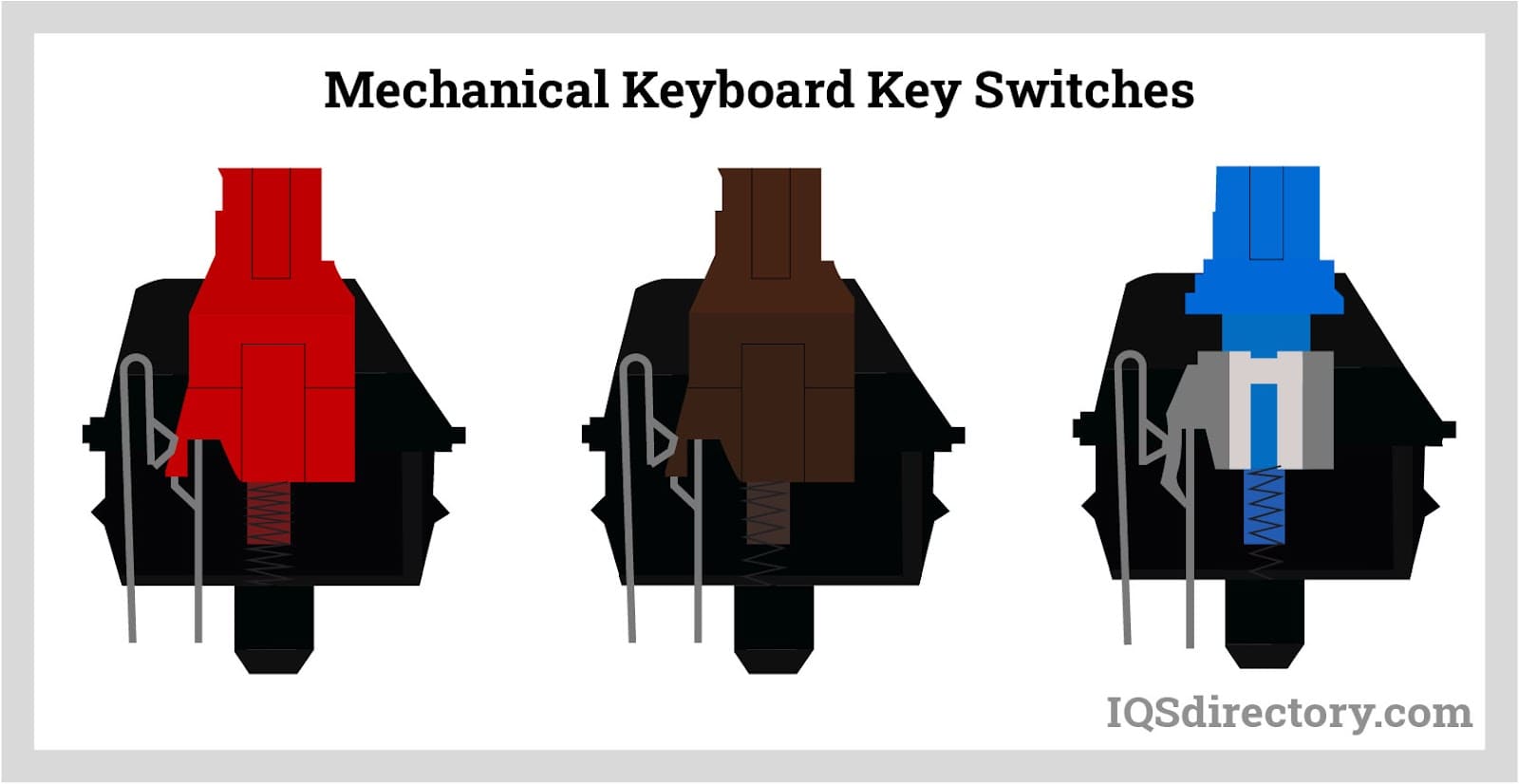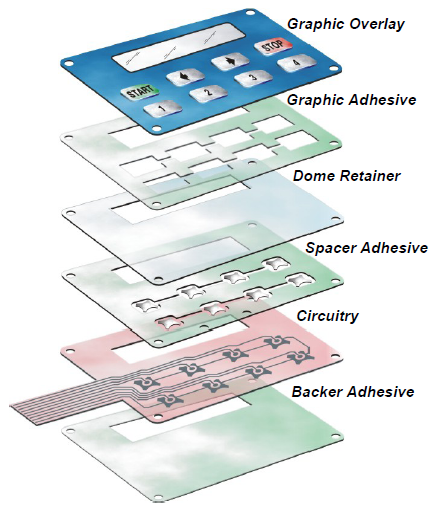The Production Process Behind Membrane Switch Over: What You Required to Know
The manufacturing process behind membrane changes combines careful style, material choice, and quality assurance. It starts with understanding the intricacies of membrane layer switch layout and progresses with various phases, including material options and printing methods. Each stage plays a necessary role in making certain performance and resilience. The complexities of layer building and the strenuous screening standards might reveal insights that are not promptly apparent. What lies beyond these foundational aspects?
Recognizing Membrane Change Layout
Membrane layer buttons may appear basic at very first glance, their style includes complex factors to consider that assure capability and resilience. The style process begins with an extensive understanding of individual demands, including the interface's designated application and environmental elements. Ergonomics is a crucial element, as the layout must facilitate convenience of usage while making certain that responsive comments satisfies customer expectations.Moreover, the layering of parts, such as visuals overlays, sticky layers, and conductive traces, should be precisely engineered. membrane switch. This split setup not only influences the button's responsiveness however likewise impacts its longevity. Focus is provided to the sealing techniques used to secure against moisture and dirt, which might compromise efficiency. Furthermore, design factors to consider reach looks, where color systems and aesthetic clarity boost individual experience. Ultimately, the layout of membrane switches over equilibriums functionality, customer experience, and sturdiness, guaranteeing that they fulfill the demands of numerous applications successfully
Materials Utilized in Membrane Change Manufacturing
When choosing materials for membrane layer button manufacturing, it is important to ponder both performance and toughness. The primary products include polyester and polycarbonate films, which give versatility and toughness. These films are usually coated with sticky to guarantee appropriate bonding to substratums. Conductive inks, generally made up of silver or carbon, are critical for producing electric connections within the switch, permitting dependable operation.Additionally, a safety layer, such as a tough coat, is often used to enhance scratch resistance and durability. The selection of backing material, such as acrylic or foam, can significantly influence the button's tactile feeling and total user experience. Numerous ecological factors, consisting of temperature level and moisture, should direct material choice to ensure peak efficiency in certain applications. Inevitably, the appropriate mix of materials adds to the membrane layer button's functionality and lifespan, making informed choices important for makers.
The Printing Refine: Creating Graphics and Text
The printing process in membrane switch manufacturing plays a significant duty in creating top notch graphics and message. Different graphic style techniques are employed to guarantee aesthetic allure and capability, while cautious ink choice techniques are vital for sturdiness and performance. Understanding these elements is basic for attaining finest results in membrane button style.
Graphic Style Techniques
Graphic design strategies play a crucial function in the printing process of membrane layer switches, as they specify exactly how graphics and message will eventually appear on the last product. Reliable graphic layout includes the strategic usage of designs, typefaces, and colors to boost readability and visual charm. Developers typically utilize vector graphics for scalability, making sure that photos stay sharp at numerous sizes. Furthermore, focus to contrast and positioning is vital, as it influences customer interaction and aesthetic top quality. The incorporation of branding aspects, such as logo designs, must be managed with treatment to maintain brand stability. On the whole, thoughtful graphic style strategies add considerably to the performance and good looks of membrane layer switches, affecting individual experience and item efficiency.
Ink Selection Methods
Choosing the proper ink is essential for achieving the preferred aesthetic high quality and longevity in membrane switch production. Various ink types are used, including solvent-based, water-based, and UV-curable inks. Each kind offers unique attributes, such as flexibility, resistance, and adhesion to ecological factors. Solvent-based inks are often favored for their resilience and vibrant colors, while water-based inks are more eco-friendly yet might have restrictions in bond. UV-curable inks offer rapid curing and durable performance. Furthermore, color matching techniques assure that the picked inks line up with style specs. Ultimately, the selection of ink have to take into consideration aspects such as application technique, substrate compatibility, and end-use needs to attain remarkable lead to membrane layer switch graphics and text.
Layer Construction and Setting Up

Product Option Refine
A mindful option of products is essential in the manufacturing process of membrane switches, as it directly affects capability and durability. The primary materials used consist of polyester, polycarbonate, and numerous conductive inks. Polyester is often preferred for its superb resistance to chemicals and abrasion, making it ideal for rough settings. Polycarbonate, on the various other hand, supplies remarkable clearness and effect resistance, which is useful for applications needing visibility and robustness. Conductive inks, typically made up of silver or carbon, are essential for producing trustworthy electrical pathways. In addition, the selection of sticky materials influences the total stability of the switch - membrane switch. Evaluating variables such as ecological exposure, responsive comments, and aesthetic needs overviews producers in selecting the ideal materials for their specific applications
Layer Attachment Methods
Adhering layers in membrane layer switch building and construction is a crucial process that assures performance and longevity. Numerous adhesion strategies are utilized to secure suitable bonding between layers, which commonly include the use of adhesives, warm, and pressure. Pressure-sensitive adhesives (PSAs) are frequently utilized for their convenience of application and instant bonding capacities. In addition, thermal bonding strategies can be applied, where warm is used to turn on sticky residential have a peek at this website or commercial properties, securing a solid bond. The choice of bond method mainly relies on the materials entailed and the particular application demands of the membrane layer switch. Correct alignment and uniform application of adhesives are crucial to avoid issues, securing the switch runs effectively throughout its designated lifespan.
Quality Assurance Actions
Guaranteeing high quality control throughout the layer building and setting up of membrane switches is necessary for keeping performance and reliability. This process normally entails several vital procedures, consisting of comprehensive evaluations at each phase of manufacturing. Suppliers make use of advanced testing methods, such as peel tests and adhesion evaluations, to confirm the stability of layer bonds. Furthermore, aesthetic assessments are performed to recognize any kind of issues in printing or product incongruities. Ecological problems, such as temperature level and moisture, are very carefully kept an eye on to assure suitable healing and bond. Additionally, routine calibration of devices assists maintain precise production criteria. By carrying out these high quality control steps, manufacturers can greatly lower the threat of product failure, assuring that the last membrane switches fulfill the needed specifications and consumer assumptions.
Evaluating and Quality Assurance Actions

Innovations in Membrane Layer Change Technology
As innovations in innovation remain to progress, membrane buttons are benefiting from innovative advancements that enhance their capability and individual experience. One notable advancement is the integration of capacitive touch modern technology, which enables even more responsive and instinctive individual interfaces. This shift not only boosts looks but additionally reduces mechanical damage, extending the life expectancy of the switches.Additionally, advancements in graphic overlay products have caused boosted sturdiness and resistance to ecological elements such as wetness and UV light. These materials currently offer improved quality and illumination, further raising the aesthetic appeal.Furthermore, the incorporation of wise modern technology is transforming membrane changes right into interactive control board, enabling connectivity with IoT gadgets. This this link connection fosters a seamless individual experience, leading the way for applications in various industries, from health care to customer electronic devices. Jointly, these innovations position membrane changes as essential components in modern device style.
Often Asked Concerns
The length of time Does the Membrane Layer Switch Over Production Refine Take?
The period of the membrane layer button production procedure can differ considerably. Factors such as complexity, materials used, and production volume impact timelines, with typical manufacturing varying from a couple of days to numerous weeks for conclusion.
What Are the Usual Applications for Membrane Layer Buttons?
Membrane switches are typically utilized in various industries, consisting of auto controls, house devices, clinical gadgets, and consumer electronics (membrane switch). Their versatility and resilience make them perfect for applications requiring straightforward user interfaces and trustworthy efficiency in diverse environments
Can Membrane Layer Changes Be Personalized for Particular Needs?

What Is the Lifespan of a Normal Membrane Layer Switch Over?
The life-span of a typical membrane switch varies, but typically, it ranges from 1 to 5 million cycles. Elements such as usage, atmosphere, and material high quality considerably affect toughness and total efficiency with time.

Are Membrane Layer Switches Over Environmentally Friendly?
The ecological kindness of membrane switches varies. Some products utilized may not be recyclable, while others can be environmentally friendly. The overall influence relies on producing materials and methods, demanding cautious consideration during option and disposal. The production procedure behind membrane layer changes combines careful layout, product selection, and top quality control. It begins with understanding the intricacies of membrane layer switch layout and advances through numerous phases, including material options and printing techniques. When picking materials for membrane layer switch production, it is necessary to contemplate both efficiency and sturdiness. A careful choice of products is necessary in the manufacturing procedure of membrane buttons, as it straight influences capability and sturdiness. The option of attachment technique greatly depends on the materials entailed and the specific application needs of the membrane button.
Comments on “Membrane switch safety features for medical environments”